|
I'm not sure why deviled eggs are so popular. At least, mine are! They're always the first thing to go at every party, and no matter how many I make, even leftovers get devoured quickly. Historically, deviled eggs were "deviled" by mixing the yolks with soft butter and mustard. Later, the deviling became associated with cayenne pepper or paprika. The popularity of prepared mayonnaise meant that condiment soon supplanted butter as the primary ingredient. Deviled eggs are perfect for just about any party, but they seem especially lovely tea party, picnic, and summertime fare, so I just had to make them for my Scandinavian Midsummer Porch Party. As you can see in the photo, they were half-gone almost instantly, and totally gone by the end of the night. Despite their relative simplicity, they always seem so festive! They're not difficult or expensive to make, but a few tips will make things a bit easier than you might expect. Deviled Eggs RecipeI like to use free range local eggs for my deviled eggs, which makes for super delicious and bright yellow yolks. Slightly older eggs are better for peeling as the albumen of the egg starts to pull away from the shell. So if you've got a dozen eggs that need eating, there's no better way to use them up than deviled eggs. Deviled eggs are best when you boil the eggs the same day you devil them. 1 dozen eggs mayonnaise Dijon or spicy brown mustard sour cream (optional) In a stock pot large enough to accommodate all the eggs in a single layer without touching, cover the eggs with cold water. Cover the pot and place over high heat, bringing it to a full rolling boil. Turn off the heat and leave the eggs, covered, for 15 minutes. Then fish them out (a slotted spoon works nicely) and deposit them in a large bowl of ice water to stop the cooking process and cool them down. Let them rest at least 10 minutes. Now for the hard part - peeling them. I find the water method easiest. One at a time, place each egg in a glass, fill a third of the way with water, cover the top with your hand, and shake vigorously. Alternatively, crack the egg all over, peel up a small part, and then place under running water. In both instances, the water gets between the shell and the cooked egg, making peeling easier. Although a perfectly peeled egg is a joy, no one ever complains about a slightly battered one - they all taste the same! Slice the peeled eggs in half lengthwise and pop the yolks out into a small bowl. Mash the yolks thoroughly with a fork, until no large chunks remain. Then add about a half cup of mayonnaise and 1-2 tablespoons of prepared mustard. Add some sour cream if you like. The yolk mixture should be extra-creamy, but bright yellow from the yolks. Taste and add more mustard or salt as you like. Remember, the whites are bland. Using a spoon, plop the yolk mixture evenly into the egg halves (use a plastic bag with the tip cut off if you want cleaner piping - also good for transporting the eggs and filling on site for picnics and such), making sure to cover most of the white, not just the hollow left by the yolk. A good deviled egg should be just a bit messy to eat. Deviled eggs contain egg and mayonnaise, so they should not be left at room temperature for too long. Luckily they're not likely to last long, anyway! The Food Historian blog is supported by patrons on Patreon! Patrons help keep blog posts like this one free and available to the public. Join us for awesome members-only content like free digitized cookbooks from my personal collection, e-newsletter, and even snail mail from time to time! Don't like Patreon? Leave a tip!
0 Comments
Note: This article contains Amazon Affiliate links. As I'm sure many of you have, I've been thinking a lot about Ukraine and Eastern Europe these days. Last week I launched a Substack specifically so I could give food history commentary on current events, and my first post was all about Ukraine. I've long had an interest in the cuisines of Eastern Europe and the states of the former Russian/Soviet empires. Their creative use of ordinary ingredients and emphasis on fresh fruits and vegetables is extremely appealing to a Midwesterner raised on meat and potatoes. The connection to the land, gardens, and older folks also reminds me a lot of visiting my great-grandmothers in rural North Dakota, who kept huge gardens, and dirt cellars full of preserved foods. I'm always on the lookout for new cookbooks in this vein, so when I saw the following, I snatched it up. The week before the Russian invasion of Ukraine - Cuisines of the Caucasus Mountains: Recipes, Drinks, and Lore from Armenia, Azerbaijan, Georgia, and Russia by Kay Shaw Nelson arrived at my door. First published in 2002, it's written by Nelson, an American who studied Russian language and literature and later became enamored of the food of Georgia (which I am also very interested in). She covers the whole of the Caucasus Mountains, and writes eloquently on each country and their regional differences in agriculture, wild foods, terrain, and foodways. I'm always interested in vegetarian dishes, and this cookbook has quite a few, in addition to some delicious-sounding meat dishes. The book is divided by a combination of meal and ingredient, including appetizers, soups, dairy dishes (where eggs are confusingly included), fish, meat/poultry/game, vegetables & salads, grains & legumes, breads/pastas/savory pastries, desserts & sweets, and beverages/drinks/wine. I have earmarked a number of dishes, including salads and egg-based dishes. After the success of Eggs en Cocotte last week, I thought we'd take a stab at another egg dish for a simple supper. Nelson doesn't assign this dish to a country or region, like she does the others, so I've ascribed it to the entire Caucasus Mountains region. Poached Eggs in Spinach with Garlic and YogurtNelson's original "Poached Eggs in Spinach" recipe is pretty straightforward, and as she remarks in the headnotes, tomatoes and green beans are an alternative vehicle for the poached eggs (similar to Middle Eastern shakshuka). However, her recipe leaves a bit to be desired. Because spinach is the main vehicle of this dish, if you don't season the cooked greens and the eggs well, it will be a flop. Here's my adaptation of her original recipe. 2 packages frozen spinach (10 ounces each), cooked and drained salt, pepper, and whatever other spices you like lemon juice 6 eggs 1 1/2 cups plain yogurt 2 garlic cloves, finely chopped 1/2 cup shredded mozzarella salt pepper dried dill butter for the baking dish Preheat your broiler. Season the spinach with salt, pepper, and lemon juice. Place in a well-buttered baking dish (not glass, which is not broiler safe) and make six indentations for the eggs. Mix the yogurt, garlic, and mozzarella. Crack the eggs into the indentations, then spread the yogurt evenly over the top (I skimped mine a little because I was using fewer eggs, and shouldn't have). Top the yogurt with more salt and pepper and dried dill. Broil for 10-15 minutes or until the yogurt is bubbly and browned and the egg whites are set. Two eggs per person was plenty, and the leftovers weren't bad, although the egg will obviously cook more once you reheat it. I ate mine all mixed up with some buttered cracked wheat toast (Heidelberg Bread Company in New York makes the BEST toast). This turned out pretty well, all things considered. Without the seasoning it would have been especially bland, so make sure you season your greens! A few things I would change - press more of the water out of the spinach and add more lemon juice, add chopped fresh dill and parsley to the spinach mix, or lemony fresh sorrel if I could find it. I think I would also add onion or more garlic to the spinach itself, instead of just the topping. I would also follow the instructions and use more yogurt for the topping - the places where the egg white wasn't covered it got a little tough in the oven. I think I would still stick with just six eggs, instead of eight, because it was a nice ratio of egg-to-spinach, so the spinach felt like a substantial part of the meal, instead of a garnish for the eggs. I might also try this again in a stovetop-safe vessel like a cast iron skillet, or pre-heat the spinach in the oven before adding the eggs. The bottoms of the eggs were still a little undercooked and the tops were a bit tough. That being said, this was a surprisingly satisfying dish, and anything that gets more dark leafy greens into the diet is always a good thing. I would definitely try this again, but with some changes to make it more flavorful. What do you think - would you try it? The Food Historian blog is supported by patrons on Patreon! Patrons help keep blog posts like this one free and available to the public. Join us for awesome members-only content like free digitized cookbooks from my personal collection, e-newsletter, and even snail mail from time to time! Don't like Patreon? Leave a tip! Tip Jar
$1.00 - $20.00
Like what you read, watch, or hear? Wanna help support The Food Historian, but don't want to commit to a monthly thing, or sign up for Patreon? Then you're in luck! You can leave a tip! This one-time (non-tax-deductible) donation helps keep The Food Historian going and pays for things like webhosting, Zoom, additions to the cookbook library, and helps compensate Sarah for her time and energy in helping everyone learn more about the history of food, agriculture, cooking, and more. Thank you! I love brunch. Not the kind you wait in line for, crowded and busy and loud. I love brunch made at home. It's as quiet or loud as you want it to be, the service is usually pretty good, and while there's the effort of making food, if you play your cards right, it's always hot when it gets to the table, and hopefully someone else will do the washing up. Eggs have long been a breakfast staple. If you've a hot skillet, they cook up in a flash. And if you keep chickens, you have a fresh supply every day, at least during the warmer months. But getting a bunch of eggs hot and cooked to order to the table can be a precarious thing when you're hosting. So I took to my historic cookbooks and found a viable solution - eggs en cocotte. Technically, it's oeufs en cocotte, which is French for eggs baked in a type of dish called a cocotte, which may or may not have been round, or with a round bottom and/or with legs. Sometimes also called shirred eggs, which are usually just baked with cream until just set, these days en cocotte generally means the dish spends some time in a bain marie - a water bath. The cookbook recipe I used was from Practical Cooking & Serving by prolific cookbook author Janet McKenzie Hill. Originally published in 1902, my edition is from 1912. You can find the 1919 edition online for free here. A weighty tome of a book, Practical Cooking and Serving is nothing if not practical, and McKenzie Hill is uncommonly good at explaining things. Her section on eggs explains: "Eggs poached in a dish are said to be shirred; when the eggs are basted with melted butter during the cooking, to give them a glossy, shiny appearance, the dish is called au mirroir. Often the eggs are served in the dish in which they are cooked; at other times, especially where several are cooked in the same dish, they are cut with a round paste-cutter and served on croutons, or on a garnish. Eggs are shirred in flat dishes, in cases of china, or paper, or in cocottes. A cocotte is a small earthen saucepan with a handle, standing on three feet." Since my baking dishes were neither the flat oval shirring dishes, nor the handled kind, I guess perhaps they are neither shirred nor en cocotte, according to Hill, but we can afford to be less picky about our dishware. Hill offered two recipes: one more classic version with breadcrumbs (optional addition of chopped chicken or ham) mixed with cream "to make a batter." The buttered cocotte was lined with the creamy breadcrumbs, the egg cracked on top, with the option to cover with more breadcrumb batter. The whole thing was then baked in a hot water bath "until the egg is set." My brunch guest adores mushrooms, and I wanted something a little fancier and more substantial, so I went with Hill's version No. II. Eggs en Cocotte with Sauteed Mushrooms (1912)Hill's original recipe reads: Sauté a handful of chopped mushrooms with a little onion juice in butter five minutes; add a little chopped parsley, sprinkle the same on the bottom and sides of a buttered shirrer or cocotte, and break the egg into the dish. Sprinkle with the fine herbs and cook as above, basting two or three times with melted butter. I will admit I didn't follow the directions as closely as I should have - I didn't use hot water in my bain marie (oops), and I didn't baste with butter. So the eggs were cooked a little more solid than I would have like, but still turned out deliciously. Here's my adapted recipe: 1 pint white button mushrooms, minced 2 tablespoons butter 1 clove minced garlic salt and pepper 2 tablespoons heavy cream 2 tablespoons fresh flat leaf parsley, chopped 4 eggs Preheat the oven to 350 F. Butter three or four small glass baking dishes. Sauté the mushrooms and garlic in butter, adding salt and pepper to taste. When most of the mushroom liquid has cooked off, add the heavy cream and parsley and stir well. Divide evenly among the baking dishes, make a little well, and then crack eggs into dishes. One or two per dish. Salt and pepper the egg, then place in a 9x13" baking pan with two inches of water (use hot or boiling water). Bake 5-10 minutes, or until the egg white is set and the yolk still runny. For firmer eggs, bake 10-15 mins. I did not use boiling water, so the whole thing took more like 20-30 mins for the water to heat up properly, and the yolks got firmer than I would have liked. Tasted delicious, though! This is a very rich dish, so best served with something green and piquant - I chose baby arugula with a sharp homemade vinaigrette (2 tablespoons olive oil, 2 tablespoons lemon juice, 1 tablespoon dijon mustard was enough for 3 or 4 servings of salad), which was just about perfect. You don't have to be a fan of mushrooms to like this dish - white button mushrooms aren't particularly strong-flavored - they just tasted rich and meaty. And despite the fact that eggs en cocotte look and taste incredibly fancy, they were very easy and relatively fast to make. If you were cooking brunch for a crowd, you could certainly prep the mushroom mixture in advance, have the bain marie water on the boil, and make the eggs your last task for a beautiful brunch. With the simple arugula vinaigrette on the side, something sweet and bready (that recipe is coming soon, too) and some fresh fruit and mimosas, you've got yourself a winner. Do you have a favorite egg recipe? The Food Historian blog is supported by patrons on Patreon! Patrons help keep blog posts like this one free and available to the public. Join us for awesome members-only content like free digitized cookbooks from my personal collection, e-newsletter, and even snail mail from time to time! Don't like Patreon? You can leave a tip! |
AuthorSarah Wassberg Johnson has an MA in Public History from the University at Albany and studies early 20th century food history. Archives
July 2024
Categories
All
|
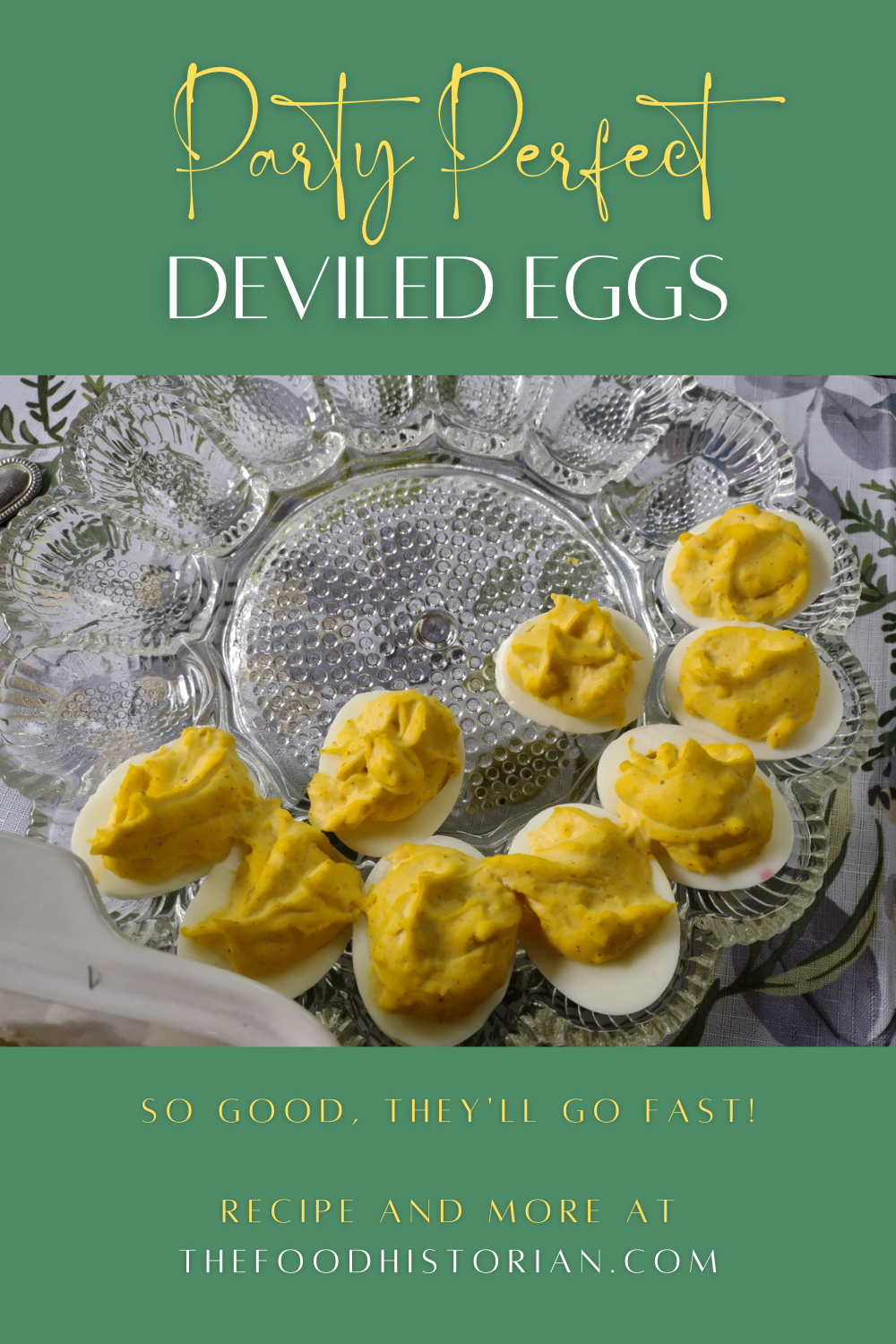
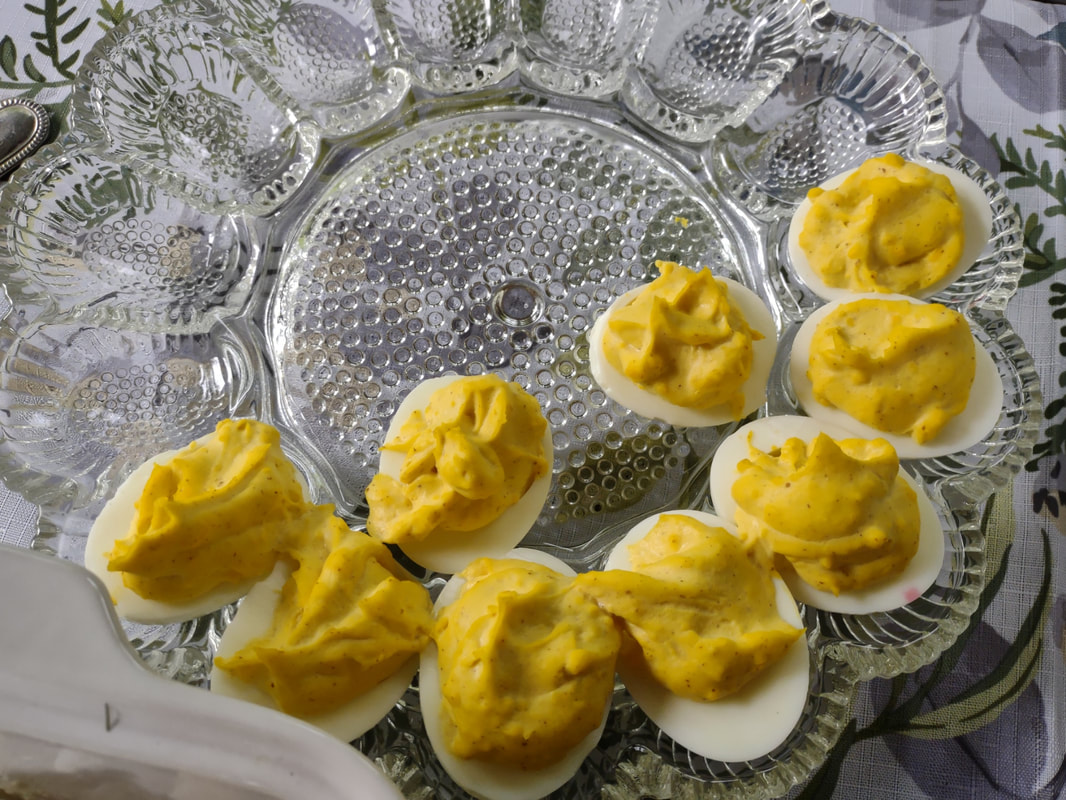
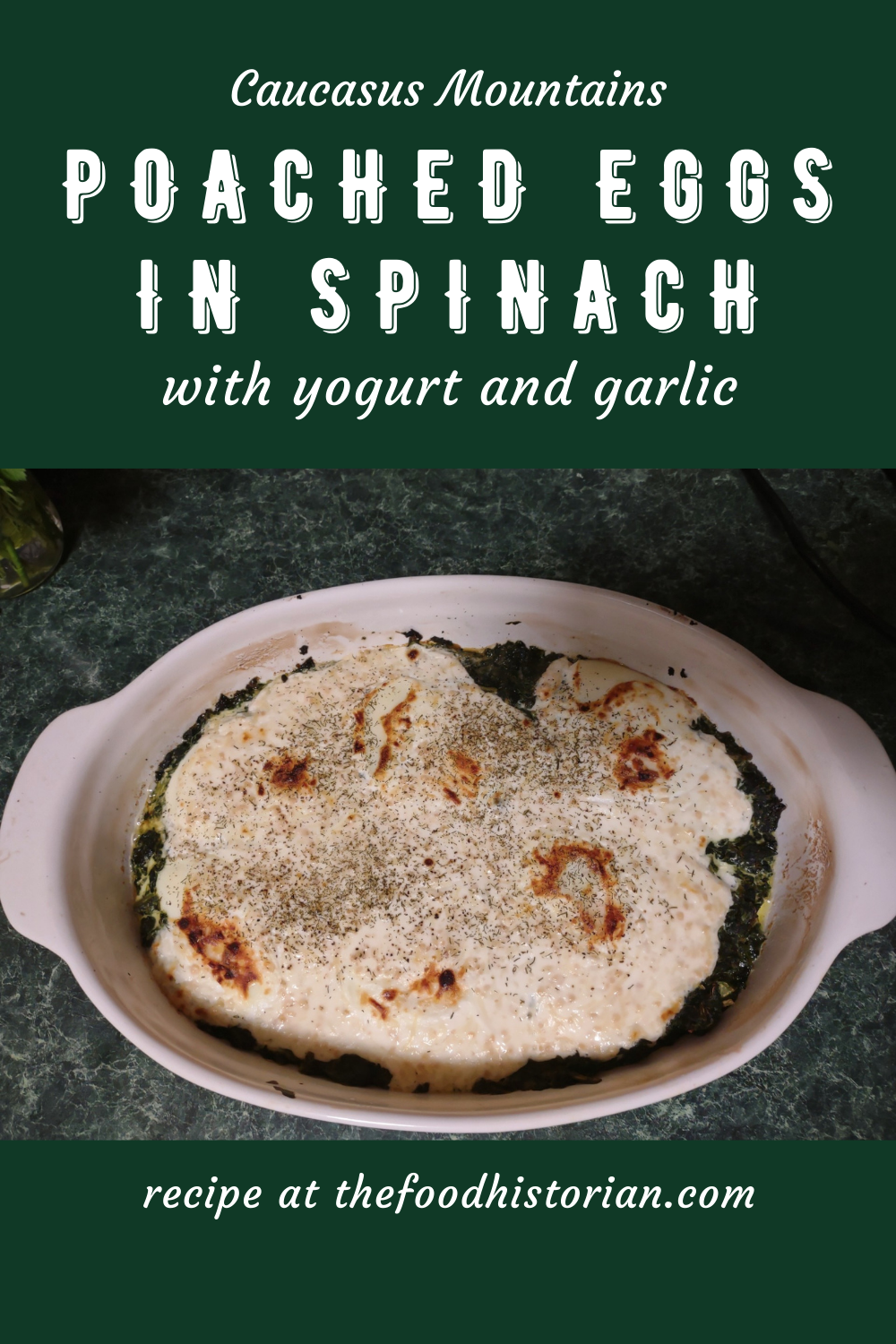
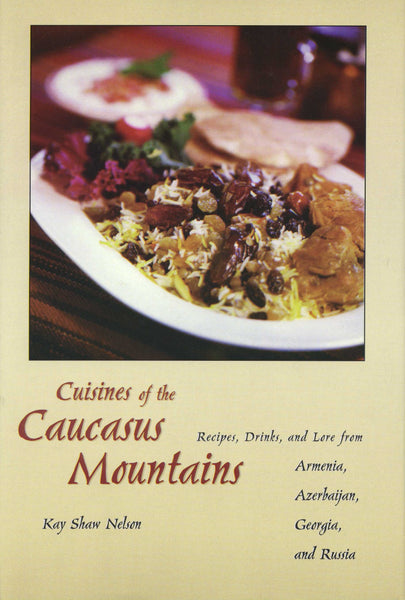
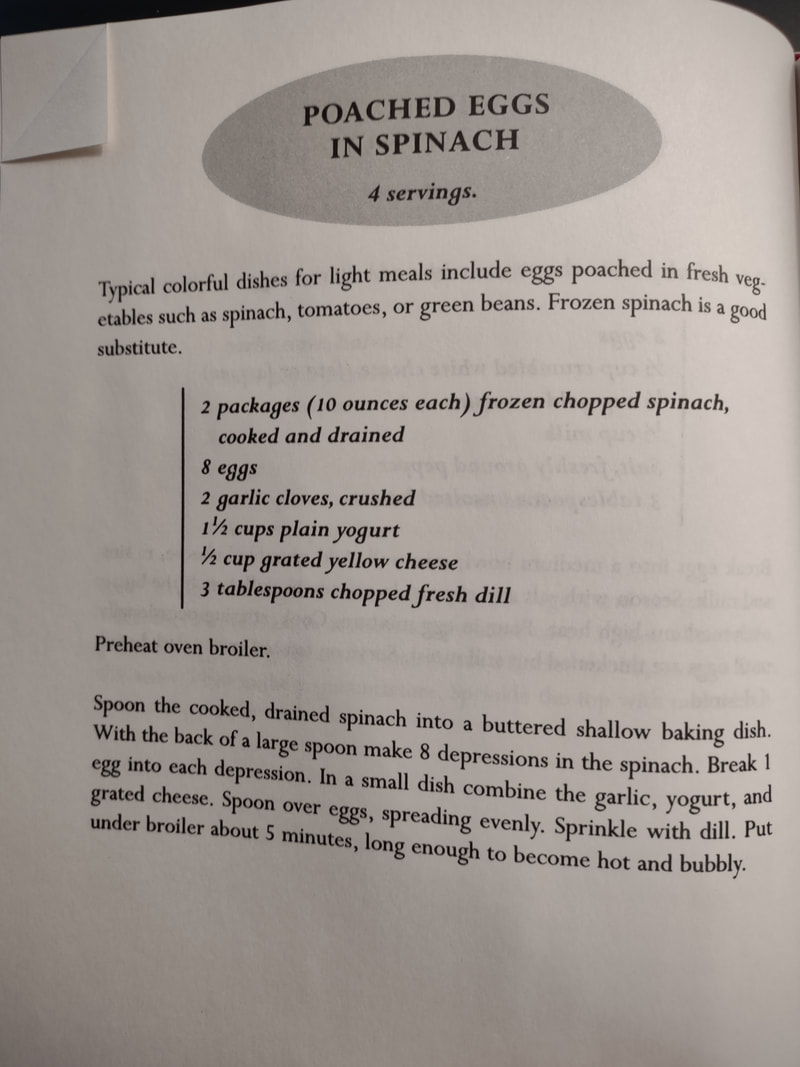
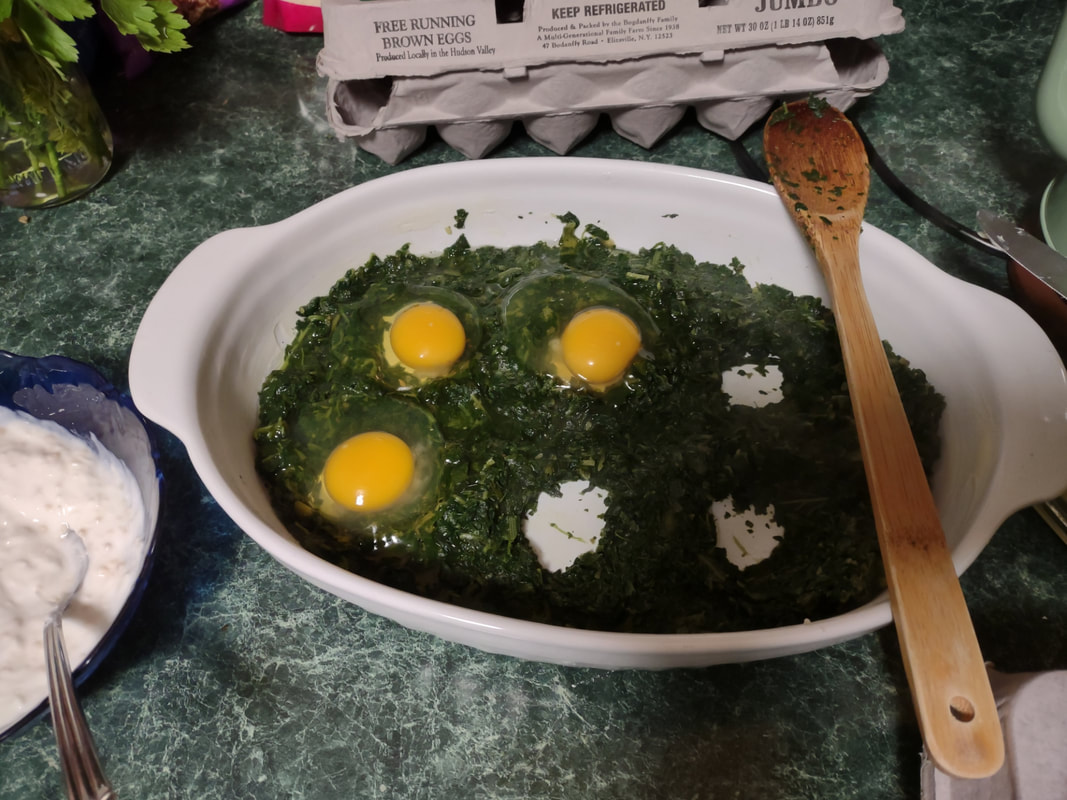
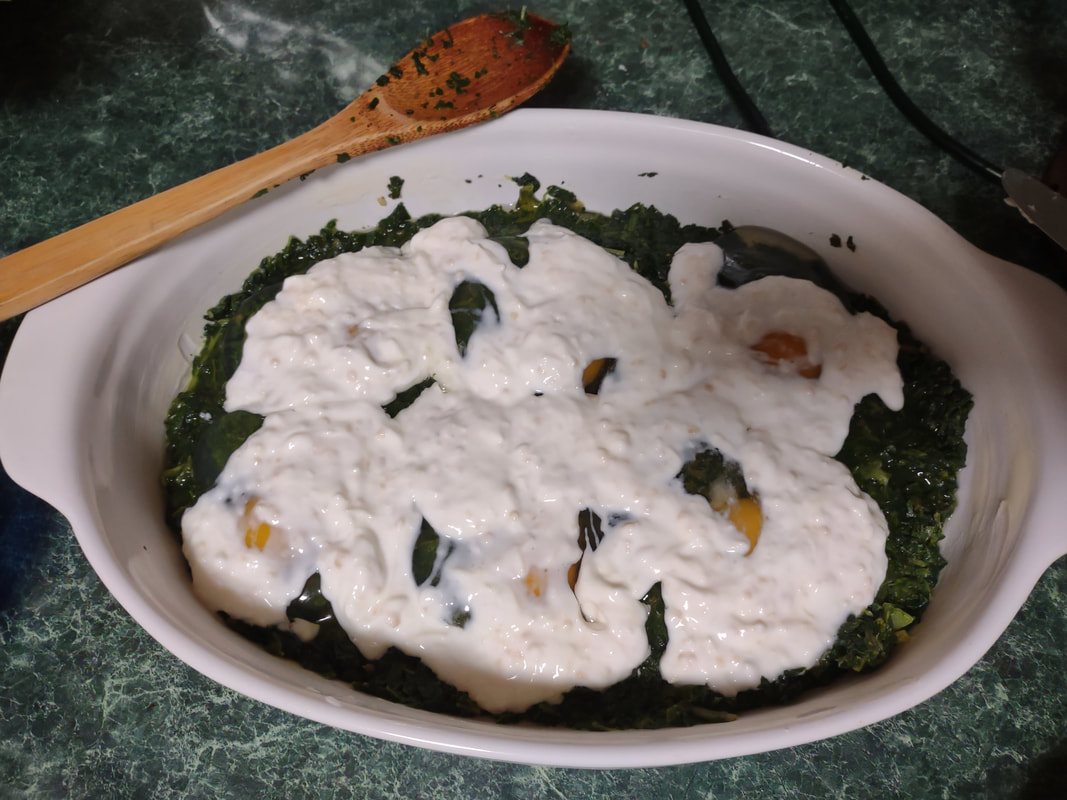

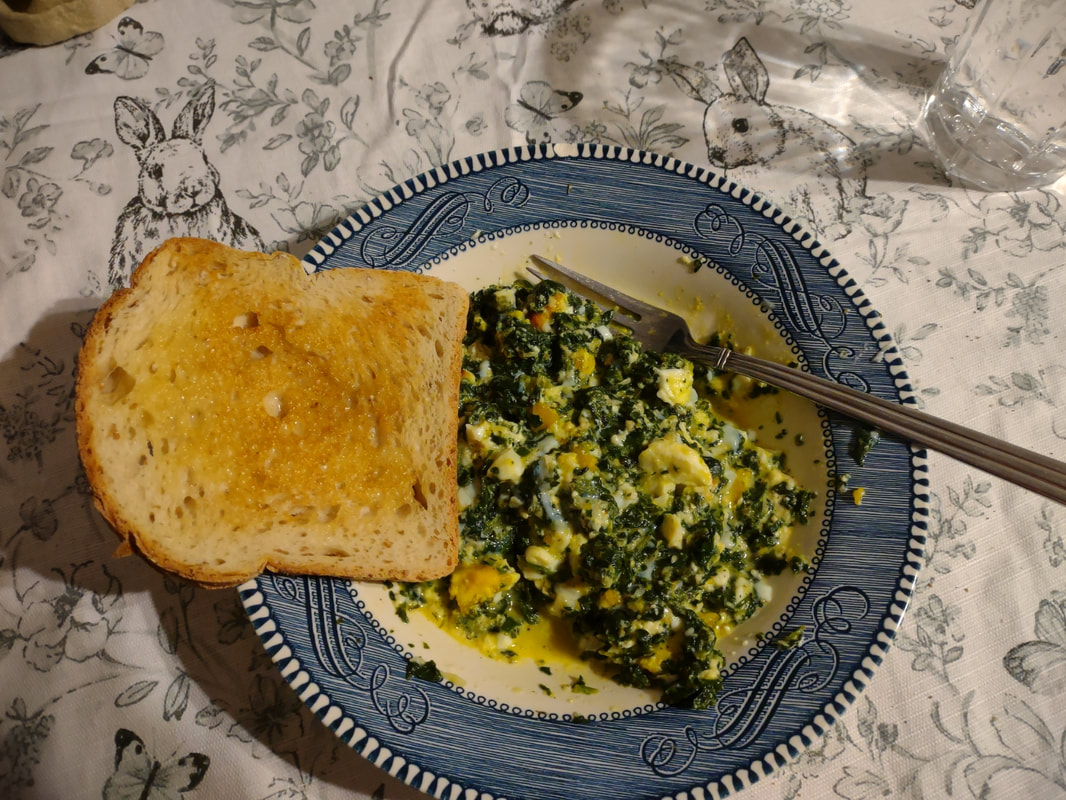
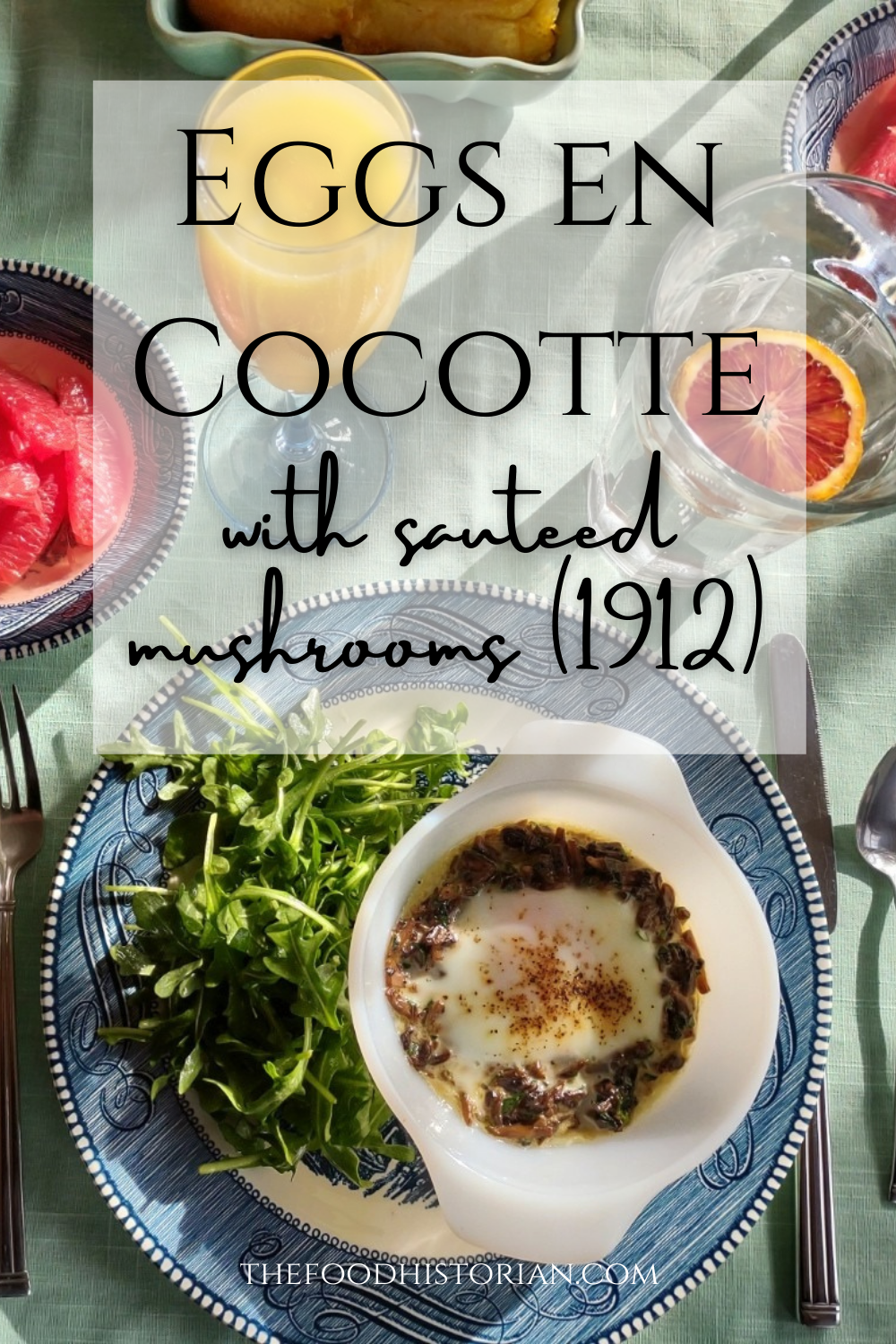
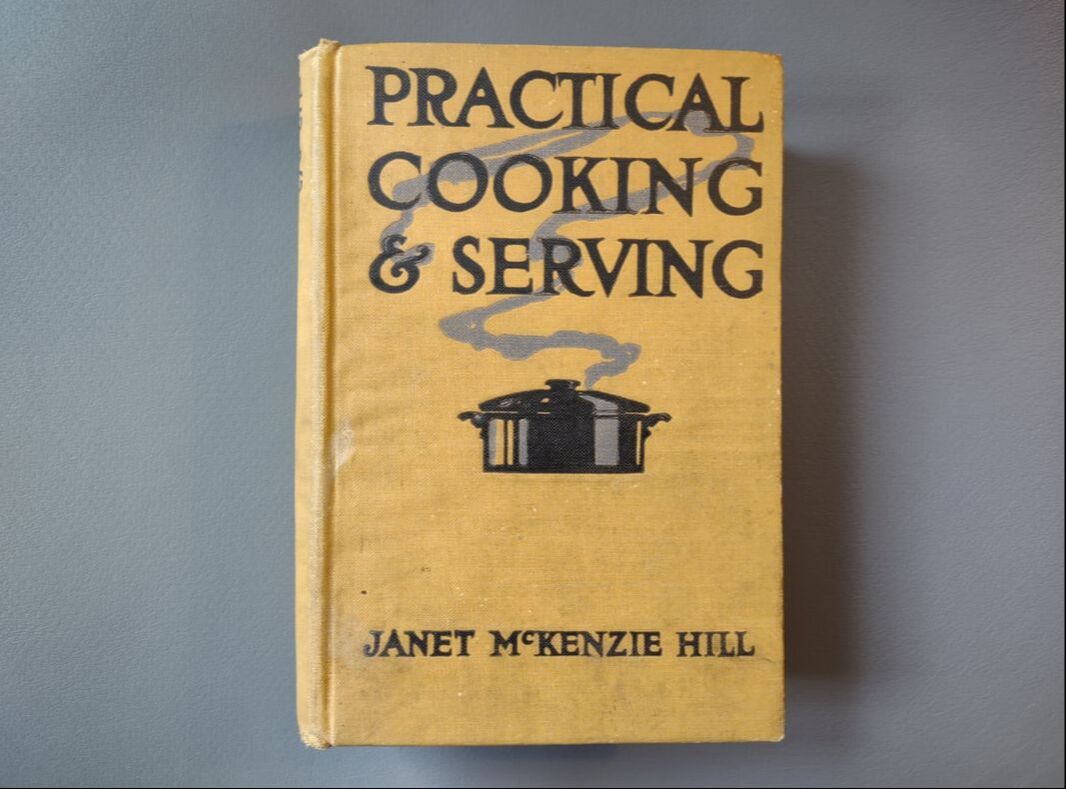

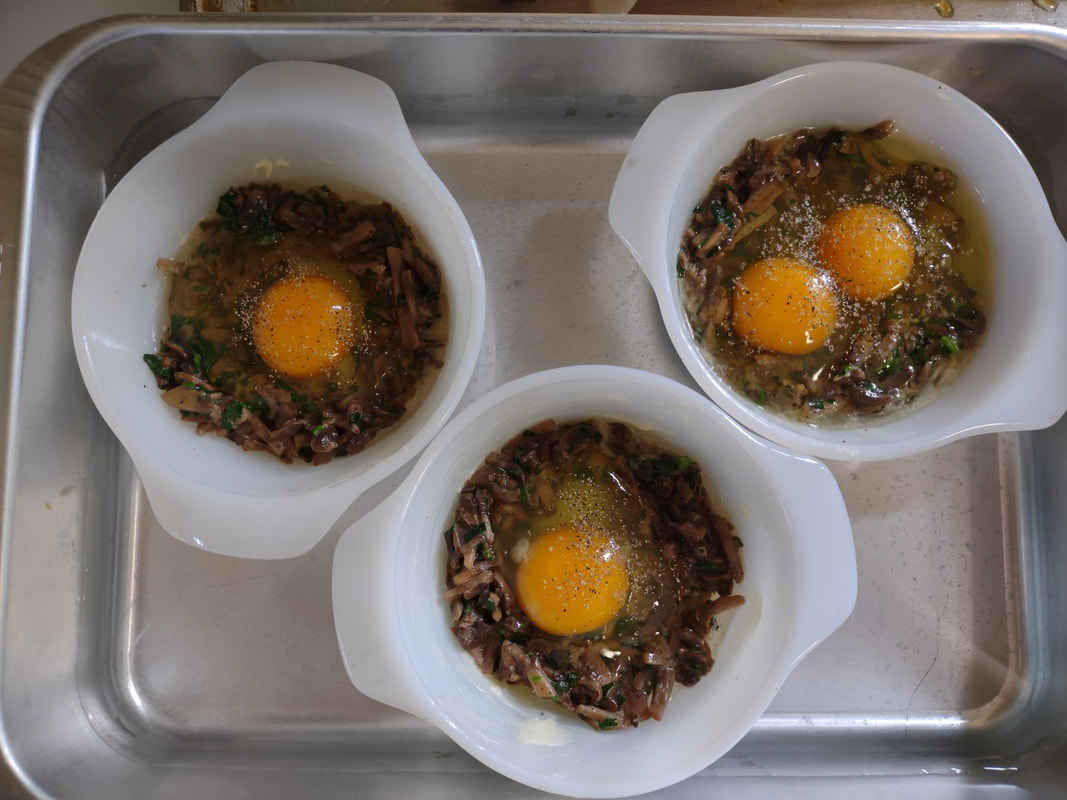
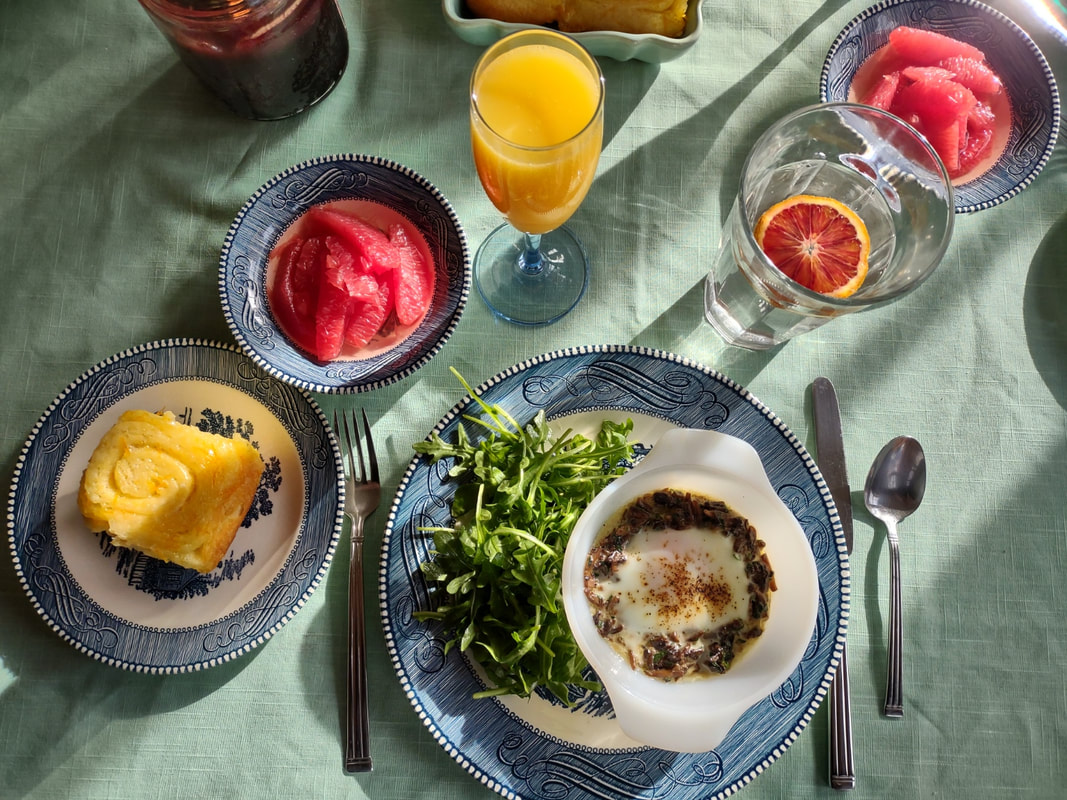

 RSS Feed
RSS Feed